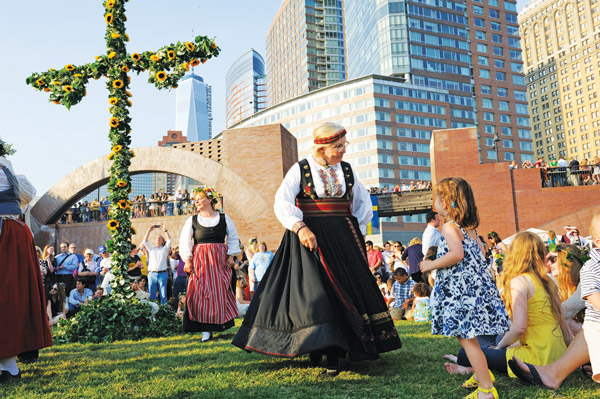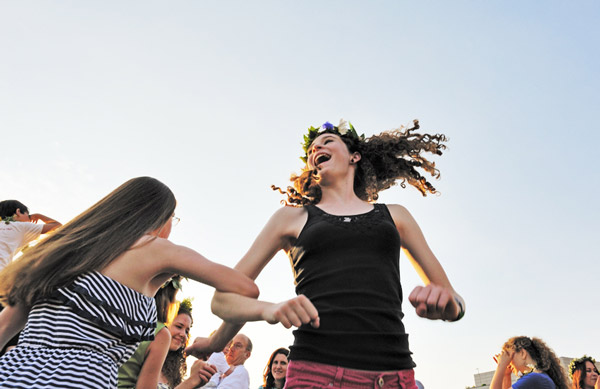
There were an estimated 6,000 people at this year’s Swedish Midsummer Festival in Wagner Park.
In New York City, the longest daylight of the year is a mere 15 hours and six minutes long. In Sweden, on June 21 — the summer solstice — the sun never sets and it’s an all-night party.
For 17 years, New York City’s Swedes have been holding their communal midsummer party in Battery Park City. Everyone is invited. This year, an estimated 6,000 people showed up to dance around the flower-bedecked maypole in Wagner Park, listen to traditional Swedish music, watch folk dancers in traditional costumes and whoop it up.
Paul Dahlin and fiddlers from the Swedish Institute in Minneapolis provided the music. They have played at the National Folk Festival and have received numerous awards for preserving Swedish folk traditions.
“We have had four generations of a family at the festival,” said Abby Ehrlich, director of programming for the Battery Park City Parks Conservancy, which sponsors the festival along with the Consul General of Sweden in New York.
The midsummer festival has ancient origins incorporating pagan traditions having to do with fertility and rebirth. Young women are supposed to weave wreaths made of seven different kinds of flowers and to place these under their pillows on midsummer’s eve so they will dream of their future husbands.
Subsequently the festival acquired an overlay of Christian meaning and is sometimes known as “St. John’s Day,” celebrating the birth of St. John the Baptist.
The weather was perfect this year. The revelers watched the sun go down over New York harbor as a glistening, full moon rose in the east. Too soon, the party was over. Still wearing their wreaths, they dispersed along the esplanade as the stars came out.

— Terese Loeb Kreuzer































